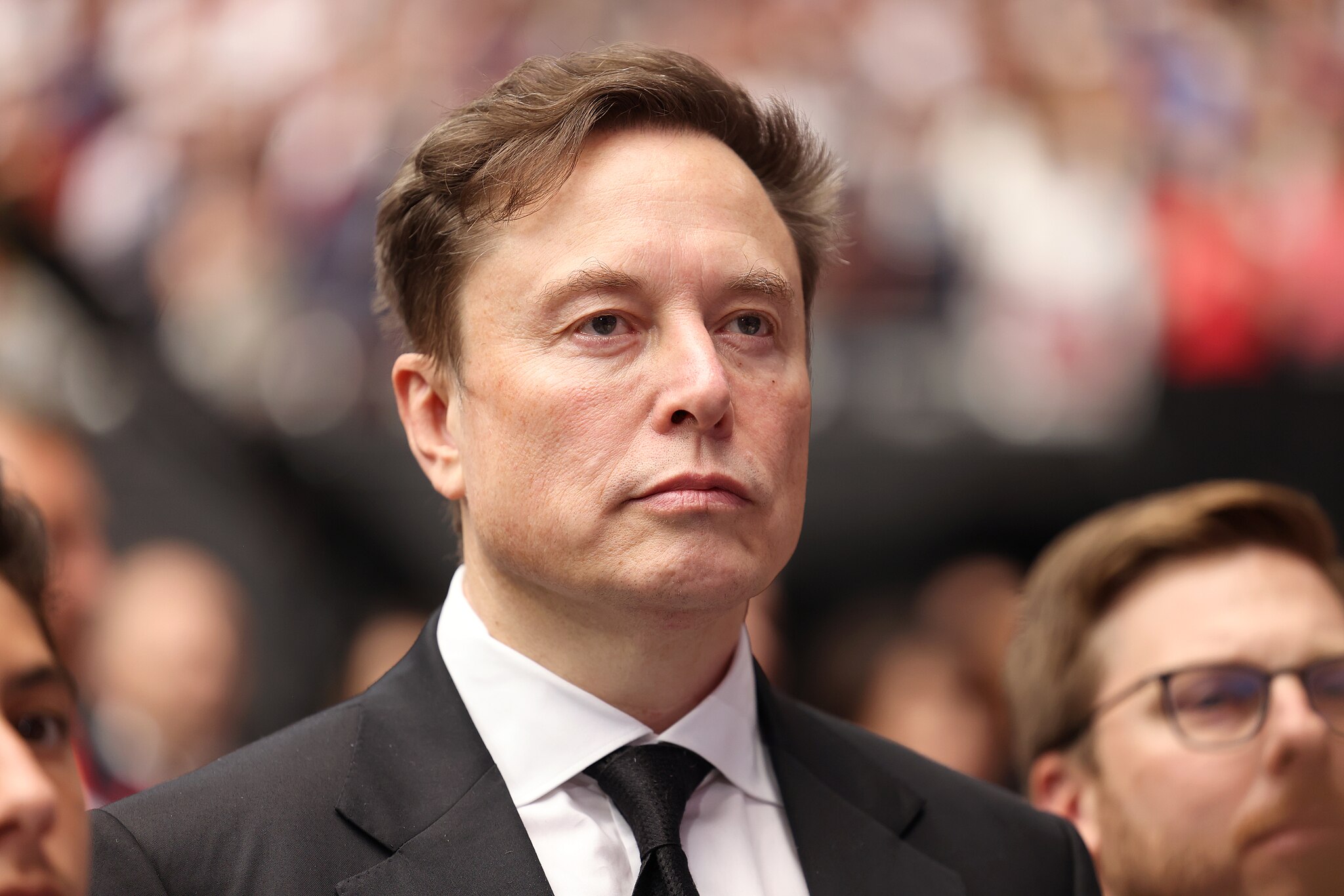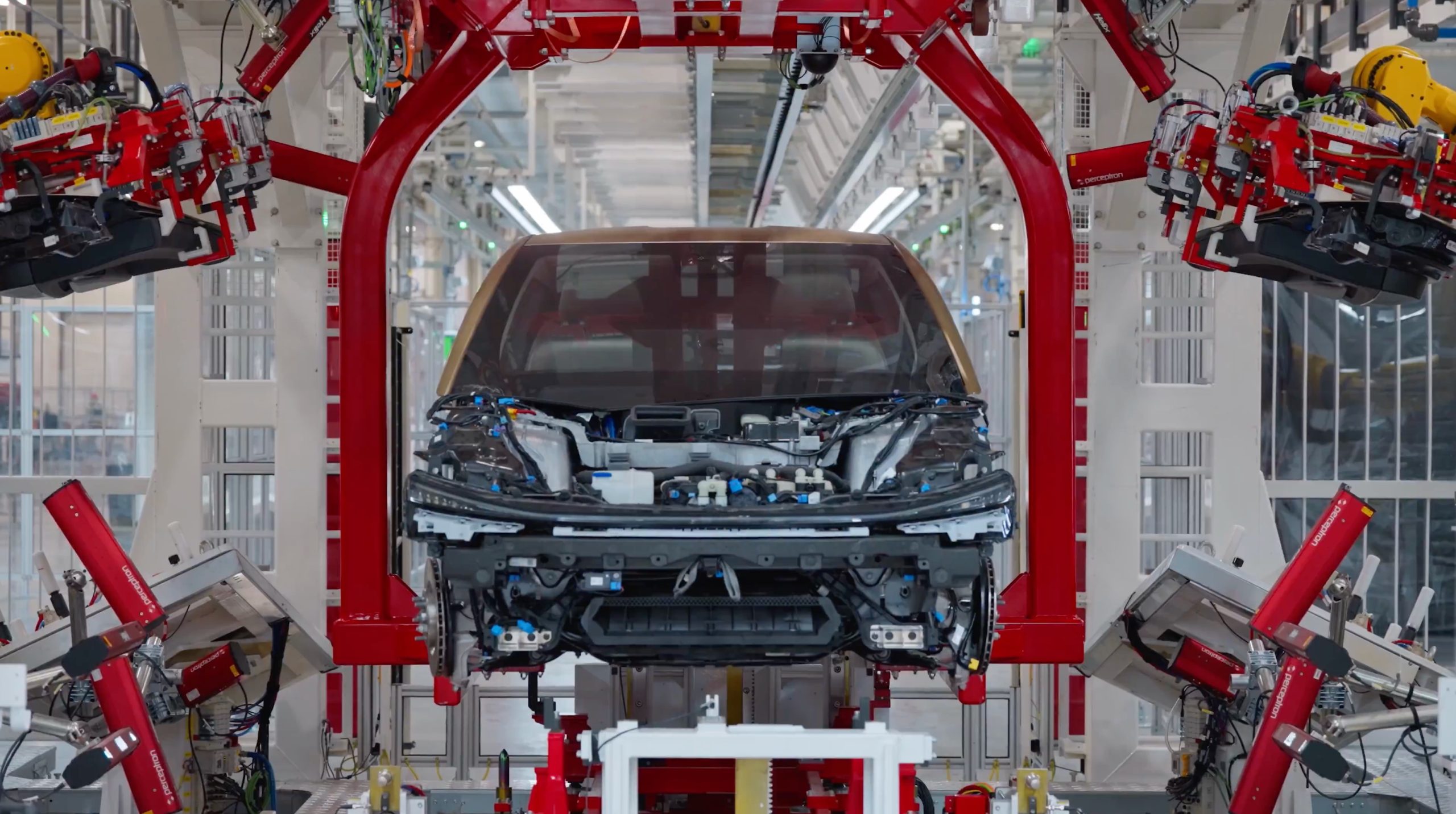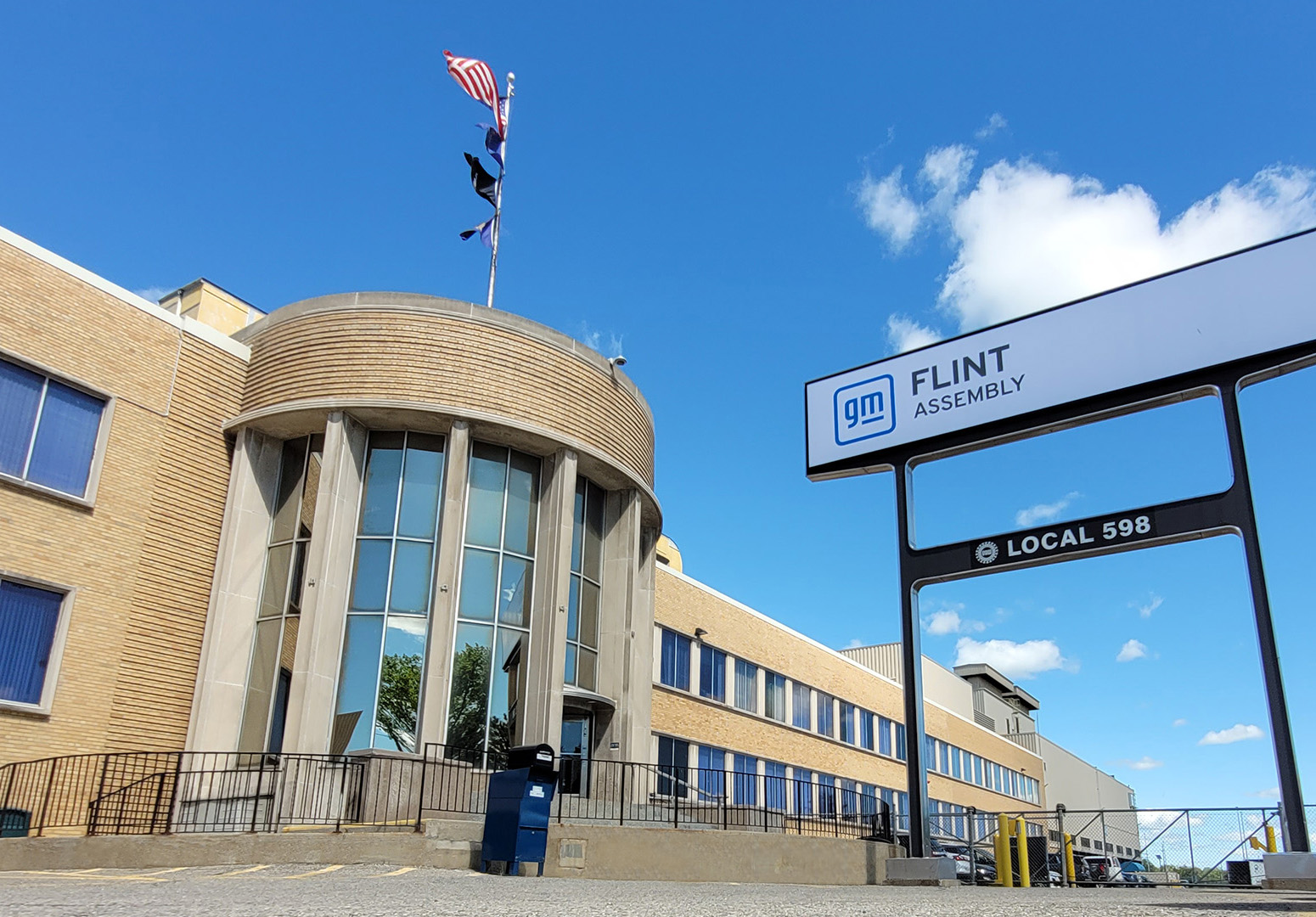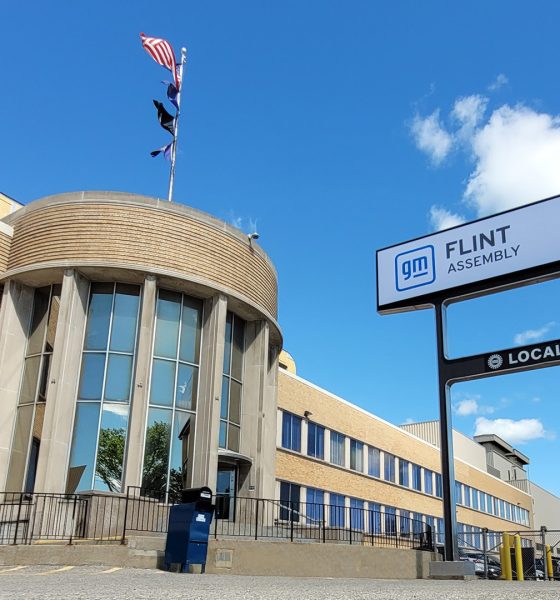As the United Auto Workers (UAW) union continues attempts to ratify new contract agreements with Big Three automakers General Motors (GM), Ford and Stellantis, one GM plant in Michigan has narrowly voted against the recently proposed deal following a historic six-week strike.
GM secured a tentative deal with the UAW late last month after Ford and Stellantis had come to tentative agreements within the prior week. The strike-ending agreements followed the initial walkouts against all three automakers on September 14 after previous union contracts expired and multiple waves of strike escalations in the weeks in between.
Since coming to the tentative agreements, the UAW is going to local chapters to explain the deals and have them ratified by workers through a vote. On Thursday, UAW Local 598 workers at GM’s Flint, Michigan assembly plant said they narrowly voted against adopting the contract, with 51.8 percent of votes cast going against the proposal, according to Reuters.
GM’s Flint assembly plant has 4,746 employees, and the factory produces the Chevy Silverado truck. GM did not comment on the process of ratification.
While GM is scheduled to continue holding votes on the contracts with additional local chapters, the news highlights the fact that the contracts are not yet a done deal — even following the costly strikes and lengthy negotiation period.
Workers at major GM plants including its Arlington, Texas assembly plant and its Fort Wayne, Indiana truck factory will vote in the weeks ahead. According to one UAW vote tracker, roughly 58 percent of GM workers across facilities who have cast votes so far have voted in favor of ratifying the contract.
UAW’s efforts to unionize Tesla ‘absolutely’ supported by President Joe Biden
The proposed UAW agreement would cover around 46,000 GM workers, including 25 percent in base wage increases through the contract’s April 2028 deadline, along with the automaker gradually increasing the top wage by as much as 33 percent. In addition, the proposal includes cost-of-living adjustments (COLA) that boost total worker pay to more than $42 per hour.
Despite the rejection of the contract at the Flint facility, some say GM is unlikely to offer much more than what it has already offered. University of Michigan professor Erik Gordon thinks chances are low for GM to go much higher.
“The chances of GM putting more than another 15 cents on the table are low,” Gordon said.
GM’s tentative contract includes almost $2 billion in investments going toward electric vehicle (EV) development at plants in Michigan, Kansas and New York. Late last month, GM also announced the delay of a key EV plant in Tennessee, and the company has separately announced plans to slow some other EV investments.
A major sticking point during early rounds of negotiations with the Big Three included adding coverage to future EV battery and auto plants, though the automakers eventually gave in.
The news also follows a nightmarish month for GM, even beyond the strikes.
GM’s self-driving subsidiary Cruise had a driverless vehicle drag and pin a woman in San Francisco in early October, for which the company’s driverless permit from the California Department of Motor Vehicles (DMV) was immediately revoked. It has since been reported that GM will halt production of Cruise’s self-driving Origin van, and the company is currently reviewing its response process following the accident.
Watch below to see UAW President Shawn Fain’s Wednesday ratification update.
What are your thoughts? Let me know at zach@teslarati.com, find me on X at @zacharyvisconti, or send your tips to us at tips@teslarati.com.

Elon Musk
Elon Musk predicts AI and robotics could make work “Optional” within 20 years
Speaking on entrepreneur Nikhil Kamath’s podcast, Musk predicted that machines will soon handle most forms of labor, leaving humans to work only if they choose to.

Elon Musk stated that rapid advances in artificial intelligence and robotics could make traditional work unnecessary within two decades.
Speaking on entrepreneur Nikhil Kamath’s podcast, Musk predicted that machines will soon handle most forms of labor, leaving humans to work only if they choose to.
Work as a “hobby”
During the discussion, Musk said the accelerating capability of AI systems and general-purpose robots will eventually cover all essential tasks, making human labor a choice rather than an economic requirement. “In less than 20 years, working will be optional. Working at all will be optional. Like a hobby,” Musk said.
When Kamath asked whether this future is driven by massive productivity growth, Musk agreed, noting that people will still be free to work if they enjoy the routine or the challenge. He compared future employment to home gardening, as it is something people can still do for personal satisfaction even if buying food from a store is far easier.
“Optional” work in the future
Elon Musk acknowledged the boldness of his claim and joked that people might look back in 20 years and say he was wrong. That being said, the CEO noted that such a scenario could even happen sooner than his prediction, at least if one were to consider the pace of the advancements in AI and robotics.
“Obviously people can play this back in 20 years and say, ‘Look, Elon made this ridiculous prediction and it’s not true,’ but I think it will turn out to be true, that in less than 20 years, maybe even as little as ten or 15 years, the advancements in AI and robotics will bring us to the point where working is optional,” Musk said.
Elon Musk’s comments echo his previous sentiments at Tesla’s 2025 Annual Shareholder Meeting, where he noted that Optimus could ultimately eliminate poverty. He also noted that robots like Optimus could eventually provide people worldwide with the best medical care.
Elon Musk
Elon Musk reiterates why Tesla will never make an electric motorcycle
Tesla CEO Elon Musk preemptively shut down speculations about a Tesla road bike once more.

Tesla CEO Elon Musk preemptively shut down speculations about a Tesla road bike once more, highlighting that the electric vehicle maker has no plans to enter the electric motorcycle market.
Musk posted his clarification in a post on X.
Musk’s reply to a fun AI video
X user @Moandbhr posted an AI video featuring the Tesla CEO on the social media platform, captioning it with “Mr. Elon Musk Just Revealed the Game-Changing Tesla Motorcycle.” The short clip depicted Musk approaching a sleek, single-wheeled vehicle, stepping onto it, and gliding off into the distance amid cheers. The fun video received a lot of traction on X, gaining 3.1 million views as of writing.
Musk replied to the post, stating that a Tesla motorcycle is not going to happen. “Never happening, as we can’t make motorcycles safe. For Community Notes, my near death experience was on a road bike. Dirt bikes are safe if you ride carefully, as you can’t be smashed by a truck,” Musk wrote in his reply.
Musk’s Past Comments on Two-Wheelers
Musk also detailed his reservations about motorcycles in a December 2019 X post while responding to questions about Tesla’s potential ATV. At the time, he responded positively to an electric ATV, though he also opposed the idea of a Tesla road-going motorcycle. Musk did state that electric dirt bikes might be cool, since they do not operate in areas where large vehicles like Class 8 trucks are present.
“Electric dirt bikes would be cool too. We won’t do road bikes, as too dangerous. I was hit by a truck & almost died on one when I was 17,” Musk wrote in his post.
Considering Musk’s comments about dirt bikes, however, perhaps Tesla would eventually offer a road bike as a recreational vehicle. Such a two-wheeler would be a good fit for the Cybertruck, as well as future products like the Robovan, which could be converted into an RV.
News
Tesla continues growing its Cybercab production team with new job listings
Both positions are based in Gigafactory Texas, the site of the Cybercab’s initial production.

Tesla continues to build out its workforce for the upcoming Cybercab, with two new job listings for quality inspectors for the autonomous two-seater being listed in the company’s official Careers website.
Both positions are based in Gigafactory Texas, the site of the Cybercab’s initial production.
New Cybercab listings
Tesla recently added openings for “Quality Inspector, Cybercab” and “Quality Inspector, Cybercab – Incoming Quality” on its Careers website. The roles involve detailed inspections of Cybercab components using precision tools such as calipers, micrometers, and gauges, among others. Candidates must also identify non-conformances, document findings in Tesla’s quality management system and collaborate with production teams to resolve issues swiftly.
Overall, these new Cybercab-related roles highlight Tesla’s emphasis on precision for the two-seater’s innovative features, such as its inductive charging setup, which is not available on any Tesla consumer vehicle today. If any, the Cybercab’s Quality Inspectors will likely be operating in uncharted territory as the vehicle is being produced using Tesla’s new Unboxed process. Elon Musk has also noted that the Cybercab’s production line will resemble a high-speed consumer electronics line instead of a conventional automotive line.
Recent Cybercab Design Evolutions
Since its October 2024 unveiling, the Cybercab has undergone several refinements visible in recent prototypes, enhancing aerodynamics and manufacturability ahead of production. The tail design now rises slightly for better airflow, with a shortened rear body panel and repositioned red reflectors farther from the wheel arches.
Front-end updates include segmented daytime running lights, actual turn signals and a sharper splitter, while side repeater cameras have shifted forward for improved visibility. Tesla has also enlarged door panels for easier ingress and egress, swapped to unpainted tires without extended covers and adjusted the B-pillar forward and lower, likely to foster a more open cabin feel.











